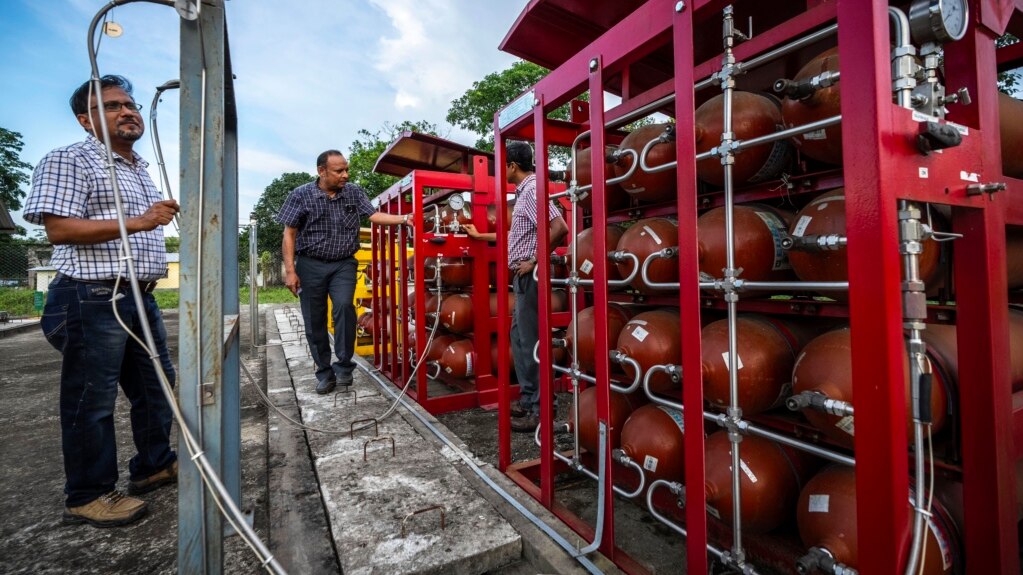Green hydrogen has been presented around the world as a clean energy solution. But is this fuel truly clean burning? And what does it take to produce it?
What is hydrogen?
Hydrogen is the lightest chemical element. It has no color, taste, or smell, and can combine with oxygen to form water.
What is green hydrogen?
To be considered green hydrogen, the production process of separating hydrogen from other elements must be powered by renewable energy.
Hydrogen has been produced and widely used for more than 100 years, mainly to make fertilizers and plastics and to process oil. The gas has mostly been produced from fossil fuels, especially natural gas.
Industry estimates predict the worldwide market for green hydrogen could reach $410 billion by 2030. This would double its current market size.
What can green hydrogen be used for?
Green hydrogen can be used in several industries, including steelmaking, concrete production and in manufacturing chemicals and fertilizers. It can also be used to produce electricity, as a fuel for transportation and to heat homes. Supporters say green hydrogen could be used to make these processes better for the environment.
Francisco Boshell is an energy expert at the International Renewable Energy Agency in Abu Dhabi, the United Arab Emirates. He told the Associated Press (AP) that he is hopeful about green hydrogen being able to produce more clean energy. This could especially be true with energy from renewables like sun and wind power, which cannot easily be stored for later use.
Are there concerns about green hydrogen?
Boshell said one problem with hydrogen is its unpredictability. The gas is highly flammable, meaning it can easily catch fire, and requires special pipelines for safe transport. This means most green hydrogen will likely be used close to where it is produced.
The Energy Transitions Commission is a research group based in London. Its experts said in a 2021 report that, because hydrogen is highly flammable and difficult to transport, its use for heating buildings and other uses is limited. The commission is calling for net-zero emissions by 2050.
The report said hydrogen is also less effective than direct electrification methods. This is because some energy is lost when renewable resources are changed into hydrogen and then that hydrogen is changed again to power. The report suggested that the gas could be used as a way to avoid storing electricity in batteries.
Some studies have questioned the high cost of hydrogen production as well as its investment risks. There are concerns linked to a greater need for water than other clean power systems. Critics have also pointed out the lack of international guidelines that make it difficult for a worldwide market to develop.
Robert Howarth is an environmental expert and professor of environmental biology at Cornell University in New York state. He told the AP he thinks green hydrogen is being praised too much, in part because of lobbying efforts by the oil and gas industry.
But Boshell, of the International Renewable Energy Agency, disagreed. His organization has projected hydrogen demand will grow to 550 million tons by 2050. That would be up from the current 100 million tons.
The International Energy Agency says production of hydrogen is responsible for creating around 830 million tons of carbon dioxide per year. Boshell said just replacing this so-called gray hydrogen – hydrogen produced from fossil fuels – would establish a long-term market for green hydrogen.
“The first thing we have to do is start replacing the existing demand for gray hydrogen,” he said. “And then we can add additional demand and applications of green hydrogen as a fuel for industries, shipping and aviation.”
I’m Bryan Lynn.

